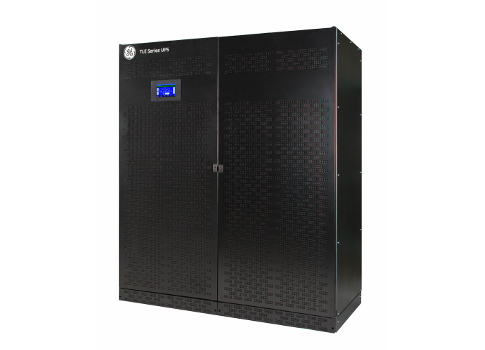The evolution of the Green Grid’s DCMM offers engineers tools to design more energy-efficient data centers.

Learning objectives:
- Review the role of the Green Grid’s data center maturity model (DCMM), specifically its role in defining energy efficiency best practices for data center power-distribution and protection systems.
- Examine the benefits, and impact on power usage effectiveness (PUE), of measuring power efficiency of all power devices across the utility-to-rack critical power path.
- Illustrate the role of total cost of ownership (TCO) in assessing the value and practicality of deploying energy efficiency metrics and tools across the critical power path.
Since its establishment in 2006, the Green Grid organization, with its data center maturity model (DCMM), has charted many paths to data center efficiency. Its model, now widely adopted and supported by more than 200 member companies, defines best practices and ranks these practices across a six-tier spectrum from “minimal” to “visionary.”
The DCMM provides the information and tools for consulting specifying engineers and data center operators to benchmark their energy efficiency against common metrics, and to create roadmaps to set priorities for improvements. With many of these earlier efficiency best practices now commonly in use, there are several next-phase technology and processes based on the evolution of the DCMM that consulting engineers need in their energy efficiency took kit.
Power efficiency metrics
The efficiency of power-distribution and protection systems is a central pillar in the DCMM. From utility power quality and distribution to system backup and protection, power is one of the top three energy efficiency considerations for data centers, after power for information technology (IT) equipment and facility cooling.
Power usage effectiveness, or PUE, is the common industry and DCMM metric for energy efficiency. While this efficiency metric (calculated as the sum of an IT infrastructure’s energy use divided by the utility power input to the facility) should be a theoretical limit of 1.0 (meaning no energy loss between the power supply and power load), most conventional data centers tend to operate at levels above 2.0 to close to 1.3 or better.
So while PUE metrics are widely adopted, full “power-in versus power-to-load” monitoring and measurement definitions and tools are not consistently deployed. For example, a Green Grid report on energy measurement shows that only 28% of respondents measure the energy consumption of “non-IT equipment” such as power-distribution or uninterruptible power supply (UPS) units.
While these numbers have undoubtedly improved since the 2009 publication of this report, it’s still an indicator of the need for more comprehensive measurement of power efficiency across each part of the “critical power path.” Accurate and actionable PUE data cannot be fully collected and analyzed without including power distribution and UPS data conversion efficiency data in this utility-to-rack monitoring.
Newer best-practice levels now require monitoring power efficiency levels at or near vital power-distribution and protection equipment, because each point along the power path contributes to energy loss. A host of power technologies reside between the utility meter and IT load such as automatic transfer switches (ATS), transformers, switchgears, UPS systems, rectifiers and battery backup systems. But there are some challenges in this level of comprehensive monitoring. There is the cost of measurement or metering equipment for each piece of equipment along the power path. It’s also difficult to integrate a single power measurement protocol across different equipment platforms and software platforms, making consistent data collection difficult. Data center operators often incur the additional expense of creating custom data analytics tools to measure systemwide efficiency.
Using TCO to improve PUE monitoring
The costs of metering and analysis should be weighed against the gains of total cost of ownership (TCO) models that calculate power efficiency and its related operating expense (OpEx) savings. After all, PUE is both a measure of energy efficiency and conservation, as well as an indicator of potential OpEx dollar savings. Using one power-protection device, the UPS, as an example, the Green Grid DCMM shows how newer eco-mode, or multimode, UPS units provide measurable PUE gains while generating long-term operational cost savings and return on investment (ROI).
Traditional double-conversion UPS units—which protect the load during outages—use a rectifier to convert ac power to dc power, and an inverter to provide safe and clean ac power to the load using either the main utility feed or battery power.
In this scenario, power efficiency is sacrificed for power protection. Transformer-based double-conversion UPS systems have a typical power efficiency rating in the range of 88% to 92%. These conversion levels put these traditional devices at a Green Grid DCMM Level 0 (minimal) to Level 3 (best practice today) rating, significantly impacting annual data center energy operating budgets.
Newer three-level insulated gate bipolar transistor (IGBT) UPS technologies, which reduced switching and filtering power conversion losses, offer DCMM Level 5 efficiency levels approaching 97% in double-conversion mode and up to 99% efficiency when operating in energy-saving eco-mode, or multimode. Fast-switching technologies in the range of 2 msec, let multimode UPS units bypass double conversion and use more power-efficient direct utility power, but can instantaneously switch back to the protection of double conversation during a power anomaly.
Green Grid calculations, show that operating in double conversion and eco-mode, with the improved ac-to-dc conversion levels coupled with less heat demands on air conditioning cooling, can improve PUE levels for UPS units by as much as 0.11 for older legacy power systems operating at a PUE levels of 2.0 to 0.04 for more advanced best-in-class data centers with PUE levels at 1.3.
The Green Grid DCMM, like any good process-improvement guide, is an evolving tool that challenges consulting-specifying engineers and data center operators to continually look for new approaches and improved technologies to work toward ongoing PUE improvements, reliability and cost savings. Applying new metrics and monitoring tools for power distribution and backup is part of that continuous path toward new, more efficient PUE levels for data centers.
Harry Handlin is director of critical power applications at GE’s Critical Power business, where he works with data center customers to build and sustain massive data and network capacity with reliable and energy efficient power.



